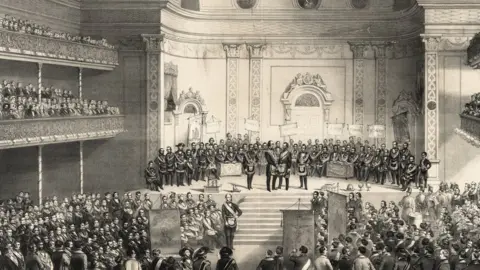Learning the Basics of How to Become a Freemason with Ease
Learning the Basics of How to Become a Freemason with Ease
Blog Article
Discover the Tricks Behind the copyright and Their Impact on Society
The copyright, frequently shrouded in myth and conjecture, provides an interesting situation research study of exactly how historical ideals can morph into modern-day conspiracy theory concepts. As we discover its beginnings, influence on advanced thought, and portrayal in contemporary culture, we start to reveal the layers of intrigue that proceed to mesmerize society.
Origins of the copyright
The copyright, frequently shrouded in enigma and conjecture, traces its origins back to the late 18th century. Recognized as the Bavarian copyright, the organization's key goal was to respond to the pertinent influence of religious conviction and promote intellectual discussion among its participants.
The copyright adopted an ordered structure, attracting inspiration from Freemasonry, which permitted for secretive conferences and routines. Membership was discerning, encompassing significant figures from different areas, including national politics, viewpoint, and scientific research. This elite network looked for to effect social and political modification via clandestine ways, supporting for the legal rights of people and the improvement of society.

Key Misconceptions and Misunderstandings
In the middle of the appeal of secrecy bordering the copyright, countless misconceptions and false impressions have arised, usually misshaping the team's real nature and intents. One common myth recommends that the copyright controls the globe's federal governments and economic climates. While it is real that the team intended to affect social structures, the idea that it runs as a cohesive worldwide creature master is largely exaggerated.
Another typical misconception is that all participants of the copyright possess large wealth and power. Actually, the initial copyright made up intellectuals and Knowledge thinkers, a number of whom sought reform instead of supremacy. The idea that the copyright specifically recruits celebs and political figures is misleading; subscription has traditionally included a diverse array of people.
Furthermore, conspiracy theory concepts frequently repaint the copyright as a sinister organization intent on worldwide supremacy via nefarious means. Thus, separating truth from fiction is crucial for a more clear understanding of the copyright's role in society.
Historical Impact on Culture
Throughout background, numerous intellectual motions have actually greatly affected societal frameworks, and the copyright played a substantial function throughout the Knowledge. Founded in 1776 in Bavaria, the copyright aimed to promote reason, secularism, and the questioning of developed authority, responding to the supremacy of religious dogma. This organization drew in prominent thinkers and advocates of liberty, fostering an environment conducive to the dissemination of Enlightenment perfects.
The copyright's principles promoted reasonable idea and empirical evidence, which added to the broader intellectual landscape that urged social reform and political adjustment. Participants sought to reshape culture by promoting for education, freedom of speech, and the splitting up of church and state. Their private nature and ambitious agenda triggered both intrigue and uncertainty, resulting in their eventual reductions by the Bavarian government in 1785.
Despite their dissolution, the heritage of the copyright continued, influencing innovative activities throughout Europe and the Americas (join freemason). Their commitment to knowledge principles aided lay the foundation for modern autonomous suitables and human civil liberties, leaving a long-term imprint on the foundations of modern society. The attraction of their secretive gatherings and philosophical pursuits remains to captivate the creativity, underscoring their historic importance
Modern Interpretations and Beliefs
Contemporary analyses of the copyright often blend historical reality with conspiracy theory theories, producing a complicated tapestry of ideas that capture popular creativity. While the initial copyright was a Bavarian secret culture started in 1776 with Enlightenment suitables, contemporary ideas have actually evolved to encompass a large selection of interpretations, typically concentrating on motifs of control and secrecy.
Many advocates of copyright theories assert that a powerful elite controls worldwide events, influencing politics, economics, and culture to serve their passions. This point of view is regularly fueled by a question of governmental and banks, leading to the idea that an undetected hand orchestrates social end results. The net has intensified these analyses, with social networks systems offering as fertile ground for the dissemination of conspiracy theory theories.
In addition, some modern-day interpretations posit that the copyright acts as an allegory for the battle between knowledge and lack of knowledge, with advocates promoting recognition and essential reasoning as a way to counteract regarded injustice. This duality-- seeing the copyright as both a literal and symbolic entity-- highlights the continuous attraction with the idea, reflecting much deeper societal anxiousness regarding power, transparency, and specific autonomy in the modern world.
The copyright in Pop Culture

In literary works, authors like Dan Brown have made use of the copyright to weave complex plots loaded with suspense and historical referrals, sparking public attraction. Movies such as "Angels & Demons" and "The Da Vinci Code" further magnify this allure, illustrating the copyright as a company with far-reaching influence.
Music, also, has actually been affected by the concept of the copyright. Artists like Jay-Z and Beyoncé have Get More Info dealt with supposition official source concerning their affiliations with the culture, motivating conversations about significance in their work and the nature of fame.
Visual art typically integrates copyright concepts, with musicians making use of icons like the Eye of Providence and the pyramid to evoke a sense of mystery. Via these various mediums, the copyright serves not just as a topic of speculation but additionally as a lens whereby society examines its own complexities and concerns.
Conclusion
Finally, the copyright stands for a remarkable intersection of Knowledge suitables and contemporary social fears relating to power and control. While its historic impact on cutting edge activities and autonomous concepts is significant, the myths and mistaken beliefs that have emerged often overshadow its real tradition. The enduring intrigue bordering the copyright, specifically within prominent culture, highlights ongoing anxiousness regarding transparency and authority, ensuring that this enigmatic team stays a subject of both academic rate of interest and public fascination.
Report this page